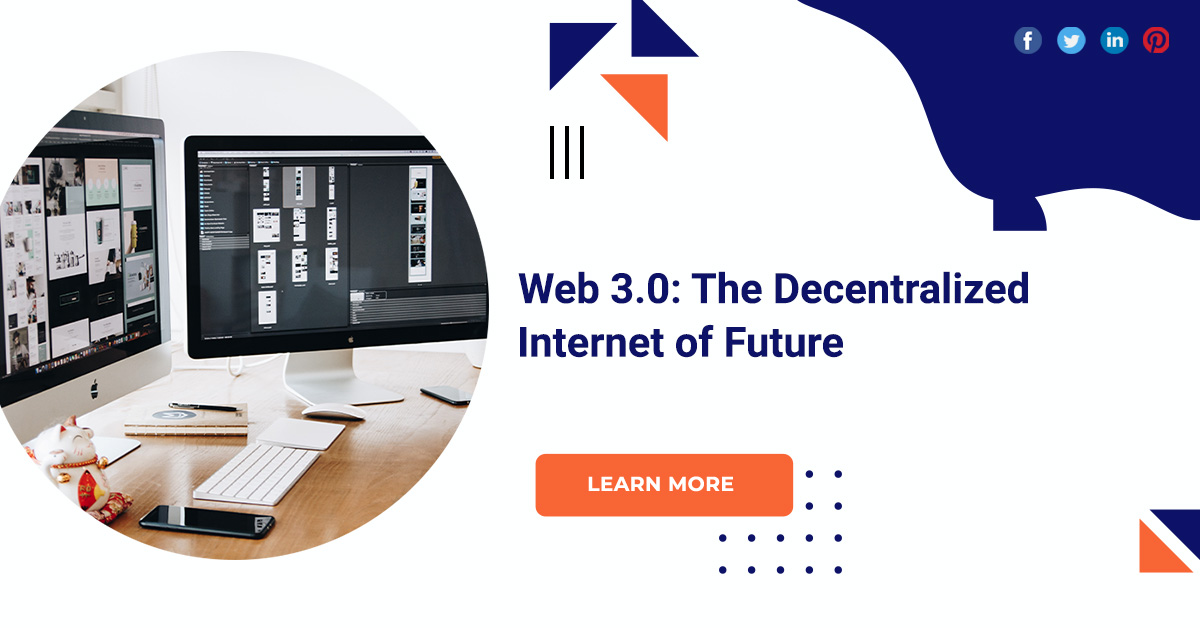Web 3.0: The Decentralized Internet Of Future
Web 3.0 is a possible future version of the Internet based on public blockchains, a record keeping system best known for facilitating cryptocurrency transactions. The appeal of Web 3. 0 is that it is decentralized, meaning that rather than consumers accessing the internet.
Web 3.0
Web 3.0 architecture
When it comes to the future of the Internet, Web 3.0 aims to significantly speed up, simplify and streamline information retrieval. The user needs to engage with the web 2.0 application interface, which connects to the backend of the application and further interacts. with the application database.
Ethereum blockchain
State machines that are accessible worldwide are maintained through a network of nodes. Anyone anywhere in the world can write to the global state machine, it is owned by the entire network as a whole. In the Ethereum Blockchain, users can write but cannot change anything that has already been recorded there.
Smart contracts
The Ethereum Blockchain is used to run these applications. Application developers use high level languages such as Solidity or Vyper to specify the logic behind state changes in their applications. The complete code is located on a central server, which is transmitted to the user via an Internet browser.
Ethereum virtual machine
Develop applications on a decentralized state machine managed by anonymous web nodes. Developers write smart contracts that are then fed into a decentralized state machine to drive the logic of their applications.
Front-end
State machines that are accessible worldwide are maintained through a network of nodes. Anyone anywhere in the world can write to the global state machine, it is owned by the entire network as a whole.
Characteristics
Semantic web
Web 3.0 developers rarely build and deploy applications that run on a single server or store data in a single database. These devices are designed to execute smart contract logic.
3D graphics
The user interface logic is defined on the front end, just like in any other software program. In addition, smart contracts that specify the application logic are also attached to the platform API.
Artificial intelligence
There is a gradual transition from Web 2.0 to Web 3.0 that is mostly overlooked by the general population. Although Web 3.0 applications look and feel similar to 2.0 applications, the back end of these applications is fundamentally new.
Ubiquitous
Web 2.0 already has this functionality. is a popular social media site where users publish and distribute images taken with their smartphones, which then become their intellectual property.
Conclusion
The future of Web 3.0 is universal applications that can be read and used on different devices and types of software, making our leisure easier business activity. Web 3.0 will be available to anyone, anywhere, anytime, thanks to the growth of mobile devices and internet connectivity.







